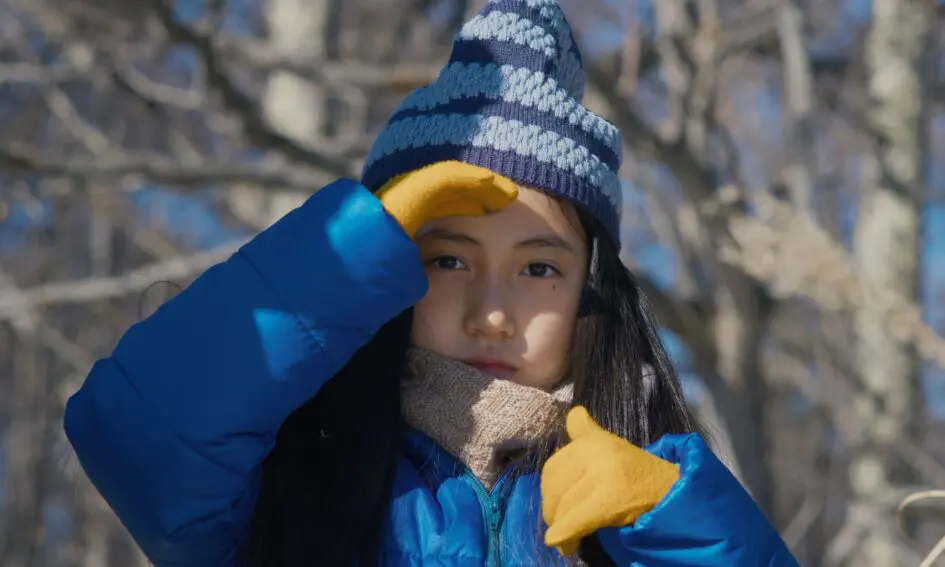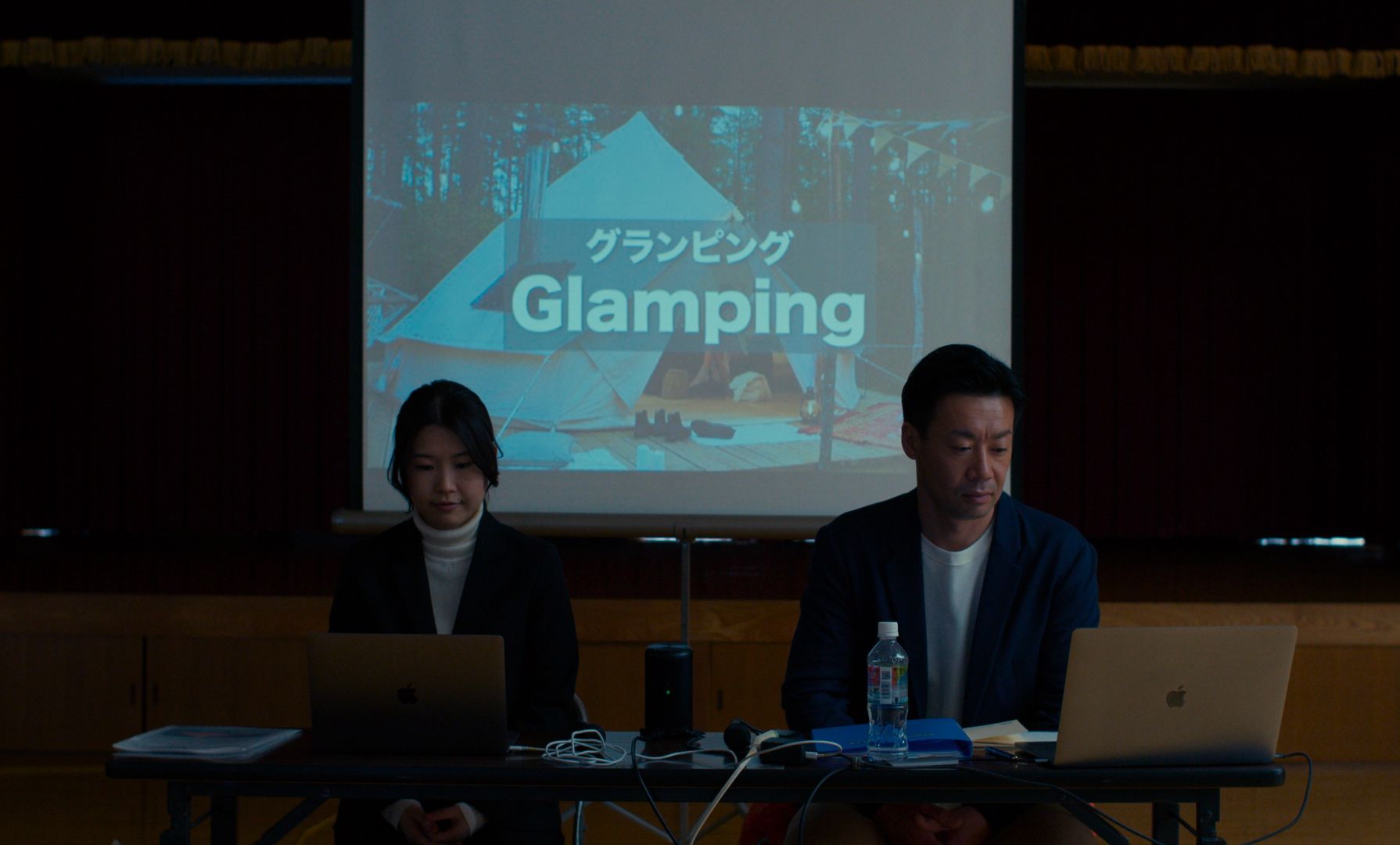Japan understands Mother Nature. If you’ve ever watched an anime by Hayao Miyazaki, you’d easily recognize that being one with your environment is something very important within Japanese culture. Taking ownership in not ruining your environment is a topic that is proudly emphasized in many of the country’s top feature films and pop-culture releases. Should the opposite course of action be taken, well… karma will eventually catch up with you.
That paradigm is ever present in filmmaker Ryûsuke Hamaguchi’s most recent feature film, Evil Does Not Exist (Aku wa sonzai shinai), which premieres today at The Belcourt Theatre in Nashville.
Beginning with a slow-but-introspective look upward among the trees of a wooded area near Mizubiki, Japan, downbeat orchestral music sets the mood. Hamaguchi absolutely takes his time to let it all soak it, almost approaching monotony. But just before your attention span lurches to some important topic that you absolutely could not afford to forget in your every-day life, Takumi (played by Hitoshi Omika) appears. Slowly but surely spooning water into containers from a natural spring, we are introduced to the way of life in this little village.
As the local “odd job man,” the audience learns that Takumi is well rounded through watching his daily routines. If there’s any flaw in his character, it can only be that he is too helpful with his neighbors and too generous with his time. Because of this, he’s constantly forgetting to pick up his daughter after school. Impatient and used to her father’s routine, Hana (Ryo Nishikawa) walks home, even though she’s been scolded multiple times not to do so alone.
Through the child, the audience gets lost in the woods again, enjoying the interactions she has along the way, whether they’re with locals, animals or other creatures. But then we hear gunshots, which are seemingly getting louder, inevitably closer, as the story unwinds, although that’s not the main event taking place within this small town.
A Tokyo developer has purchased a nearby plot of land, intending to build a glamping site for city dwellers to unwind on a nearby mountain. At the company’s presentation, the locals quickly discover a dangerous truth: The proposed capacity of the glampers’ septic tank will threaten to leak sewage into the village’s precious groundwater, which is their most valuable commodity.
Will the townspeople be able to change the corporation’s plans within a limited timeframe or will big-city progress inevitably run roughshod through the small countryside community?
“A little pollution won’t affect the water.”
While I’ve never gone on a glamorous camping expedition in my life, I actually grew up in a small, rural town and saw the benefits (and drawbacks) that came with property development. It can be harmful and dangerous if executed incorrectly. My little town’s infrastructure was not exactly prepared to become the fifth-biggest city of the state several decades ago. Today, its streets are overflowing with unintended traffic and its roads are a mess, much like the film’s mountain springs will soon be overflowing with deadly sewage.
Through Hamaguchi’s direction, Mother Nature vs. human nature becomes a major standoff, so who will ultimately win this law of nature? The very essence of the village is at stake with this battle between the locals vs. the outsiders. Balance is needed and the duty of responsibility is addressed. But just as water will always flow downhill, there’s no stopping progress. One way or another, it’ll eventually happen, like it or not.
In this film, big business isn’t necessarily portrayed as the Big Bad, but the glamping manager definitely is. Commentary is made about morality, helping your neighbors, government subsidies and even dating apps, as well as the global pandemic and marriage. But the major takeaway I had from the film is the director’s use of silence to tell a story.
Long stretches of the movie include no dialogue whatsoever. While the scenes aren’t exactly silent (there is either ambient noise or orchestral music playing in the background), there’s implied tensions preventing you from getting lulled to sleep. The pace of the story is plodding, serene and peaceful until it isn’t. The movie’s more about celebrating the great outdoors than anything else, skillfully using great panoramic environmental shots to tell the tale.
Much like Hamaguchi’s last film, the Academy Award-winning Drive My Car, this one also features extended moments within a vehicle where people’s basic truths are revealed — although this one successfully uses the term “gut shot,” which I’d never heard before. And just as wild beasts cannot be tamed, neither can these villagers’ love for nature.
Small-town life is perfectly depicted here, albeit a little too Utopian for modern-day purposes. Hamaguchi’s storytelling style truly is unlike any other filmmaker I’ve ever witnessed; I definitely needed a little screentime to play out before getting used to it again. But once that happened, I really enjoyed this foreign film with subtitles. I guess my only criticism is its title. How can evil not exist?
While not specifically stated, it’s implied that wild animals are not intentionally evil. They’re a part of Mother Nature, which is sometimes indifferent to humanity. I get that part. But sometimes evil things do happen, even if they’re unintentional, including pollution. And once the great outdoors is ruined and gone, you can never get it back.
Now, that is a scenario that even Hamaguchi would agree with, despite the film’s chosen title.

